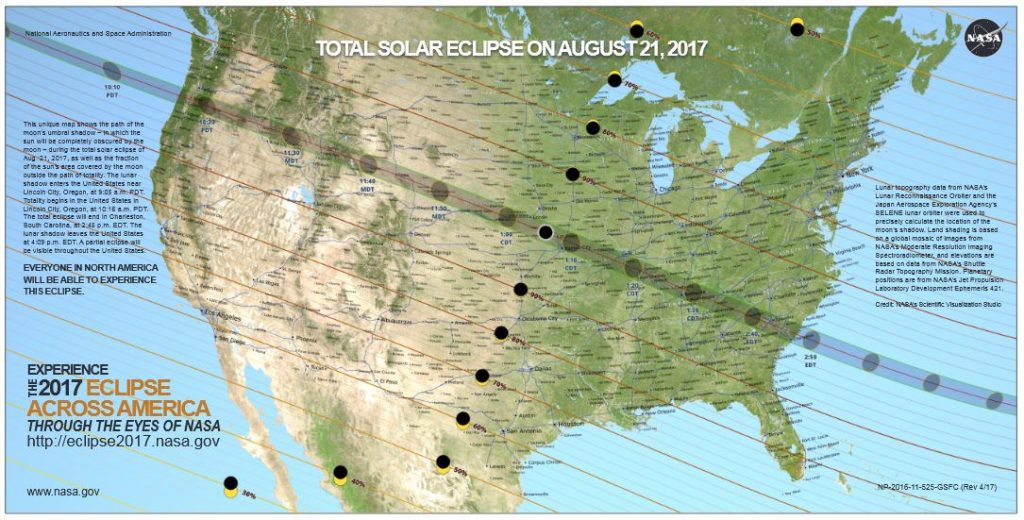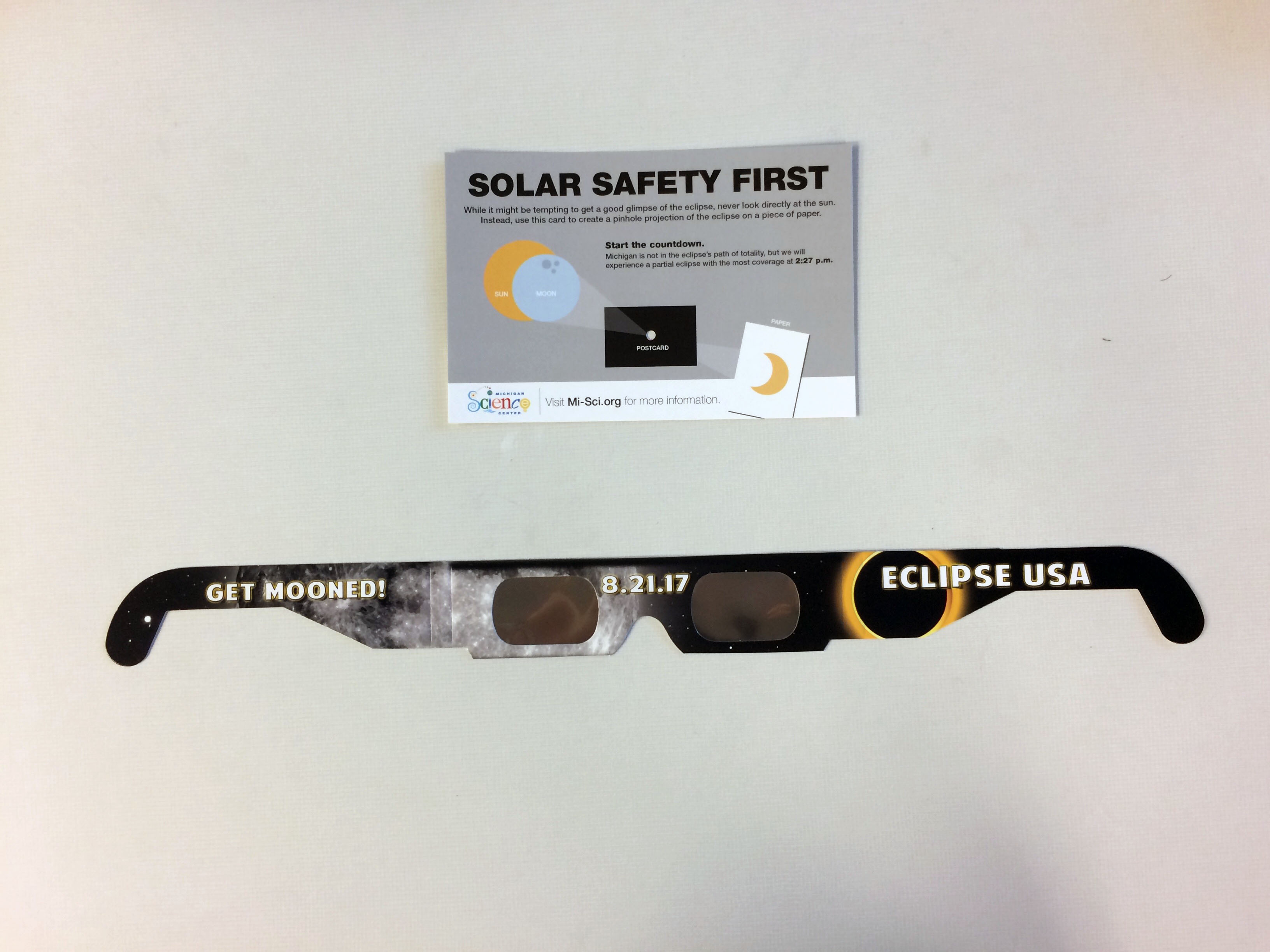Eclipse 101: How and Where to Watch [VIDEO]
Here’s what to know about the 2017 solar eclipse.

Maybe you’ve heard about the solar eclipse on August 21, 2017. Eclipses of the sun aren’t uncommon. They usually happen twice a year somewhere on Earth. What’s unusual about this one is that it’s the first time in almost a century that a total solar eclipse will stretch from one coast of the United States to the other. The path of totality begins near Salem, Oregon and ends near Charleston, South Carolina. The rest of the country — including Alaska and Hawaii — will experience a partial eclipse. Here in the Detroit area, the moon will cover a pretty good chunk of the sun.
“We’ll see about 80 percent coverage,” says Paulette Epstein, Planetarium Manager and Staff Astronomer at the Michigan Science Center in Detroit. “That will happen at about 2:27 p.m.”
The partial eclipse begins a little after 1 p.m. and will last almost three hours, ending at 3:47 in the afternoon. But Epstein says it won’t get very dark during that time.
“20 percent of the sun is still quite a bit to be shining through,” she says.
How to watch
Now, when we talk about “seeing” a solar eclipse, we have to state the obvious — you should not look directly at the sun. Ever. The best way to experience an eclipse is to create your own viewing device (watch the video below to see how to make one).
NASA and others have been distributing “eclipse glasses” specially designed for this event. But be careful — there are also a lot of fakes going around. Epstein says there is a way to tell the difference.
“There should be two different types of certifications,” she says. “There should be a British certification down on the bottom, and there should also be an ISO certification (12312-2 ).”

The best way to test the glasses is to hold them up to a light (not the sun). “If you see any light coming through those glasses, they’re not OK,” Epstein says.
Where to watch
The eclipse will be visible wherever you are, as long as the weather cooperates. The Michigan Science Center has a host of activities planned — rain or shine — including a live feed of the total eclipse. It’s located at 5020 John R at Warren in midtown Detroit.
Here’s a list of other eclipse viewing events around southeast Michigan on Aug. 21:
*Lawrence Technological University offers free public viewing through two solar telescopes from 12:30 p.m. until the end of the eclipse (around 4:00). 21000 Ten Mile Road, Southfield.
*Cranbrook Institute of Science has eclipse viewing and other activities from 11 a.m. to 4 p.m. They’re free with museum admission, but planetarium programs are extra. 39221 Woodward Ave., Bloomfield Hills.
*Kensington Metropark Nature Center and Indian Springs Metropark Environmental Discovery Center have events planned from 1-3:30 p.m. Daily entry fee is $10 per vehicle.
When’s the next total eclipse in Michigan?
About seven years from now, April 8, 2024. The path of totality will pass through Cleveland and Toledo, Ohio, and will also be visible in for about 30 seconds in extreme southeast Michigan, from Luna Pier to the state line, and a small part of Temperance.
